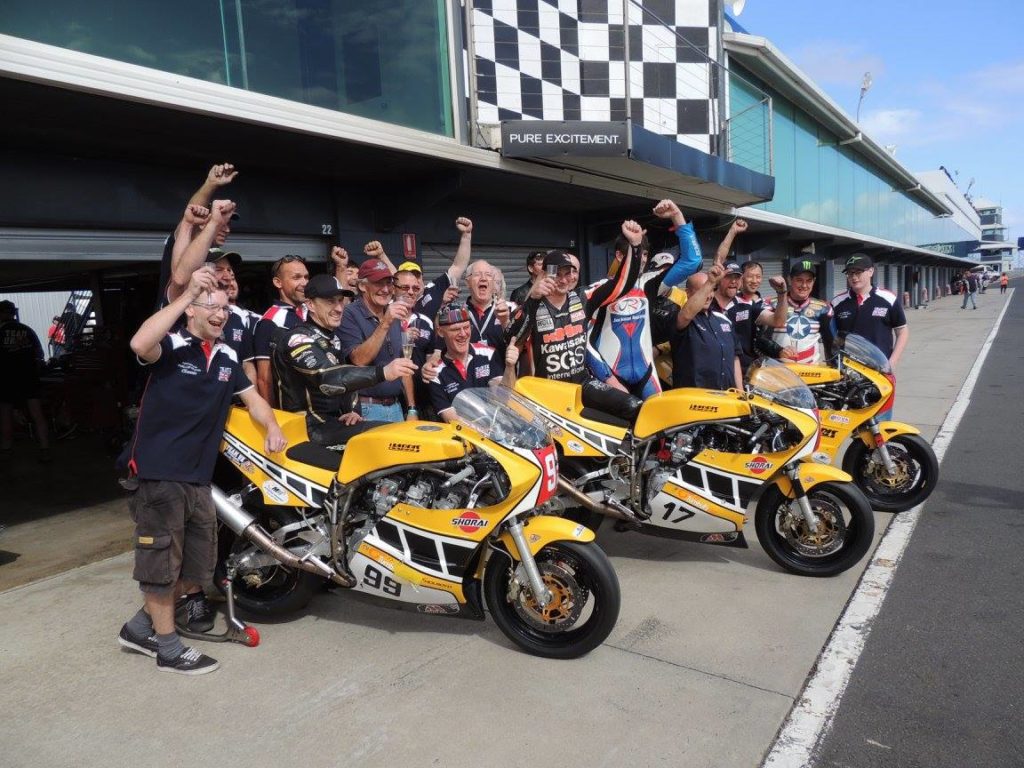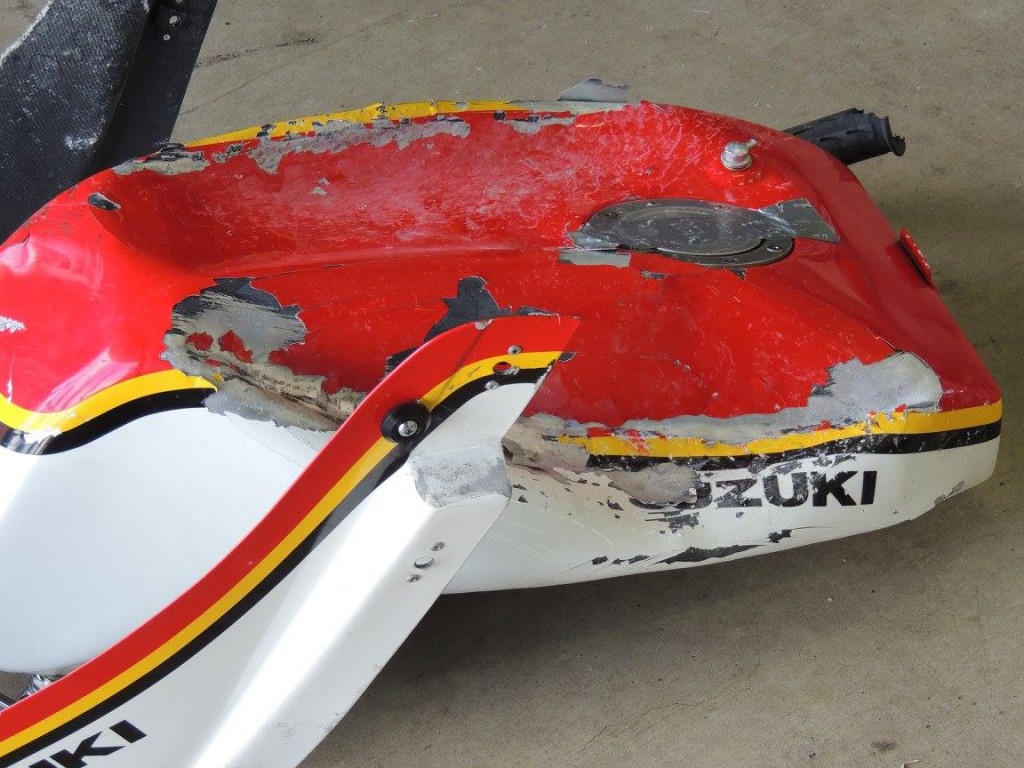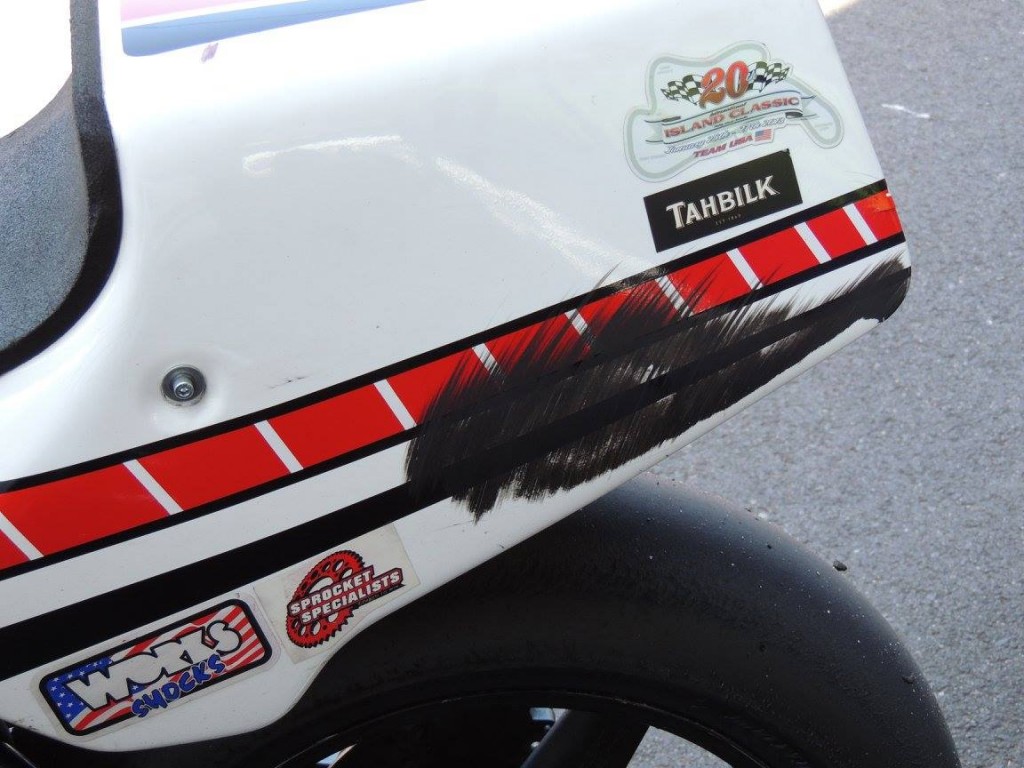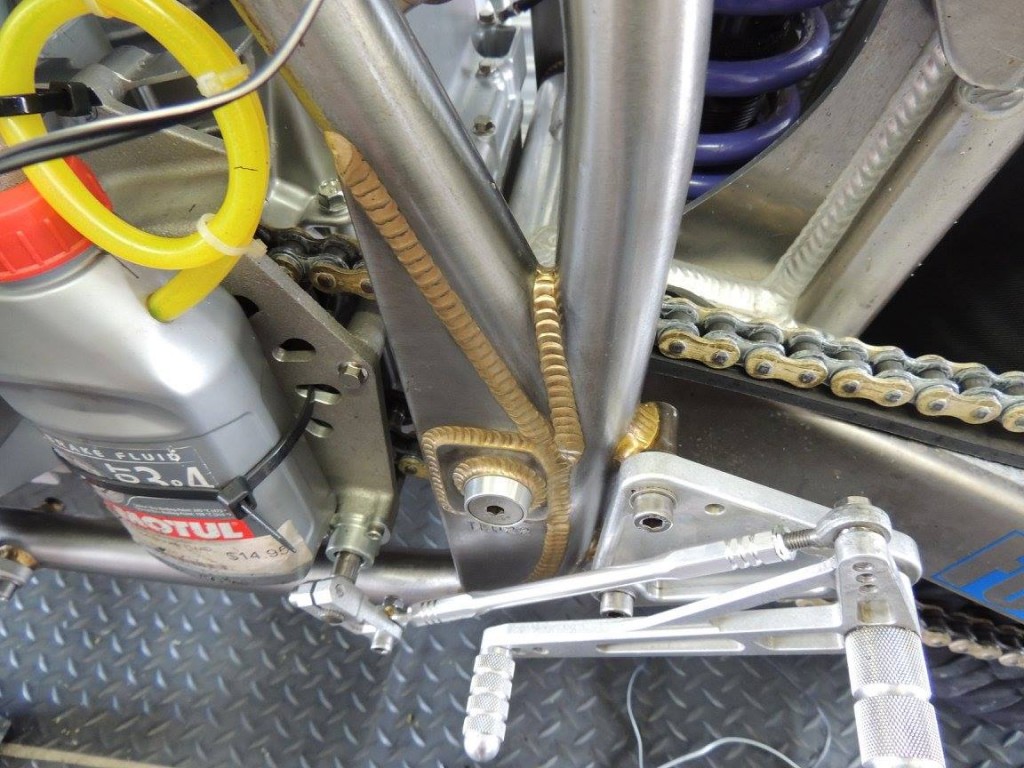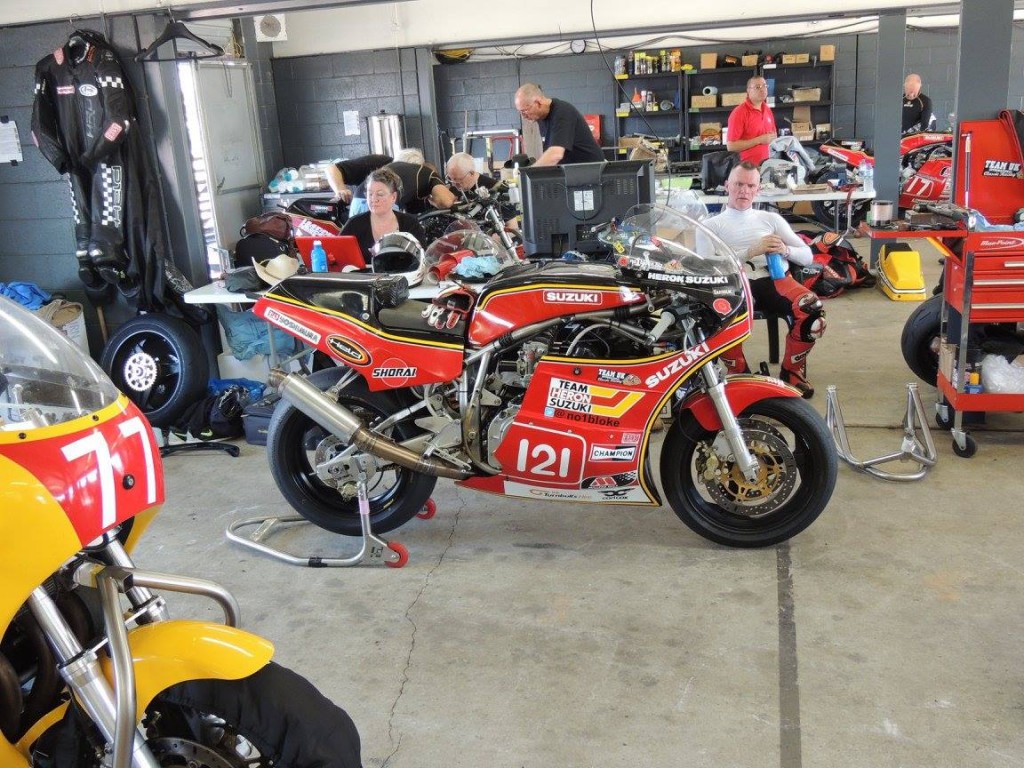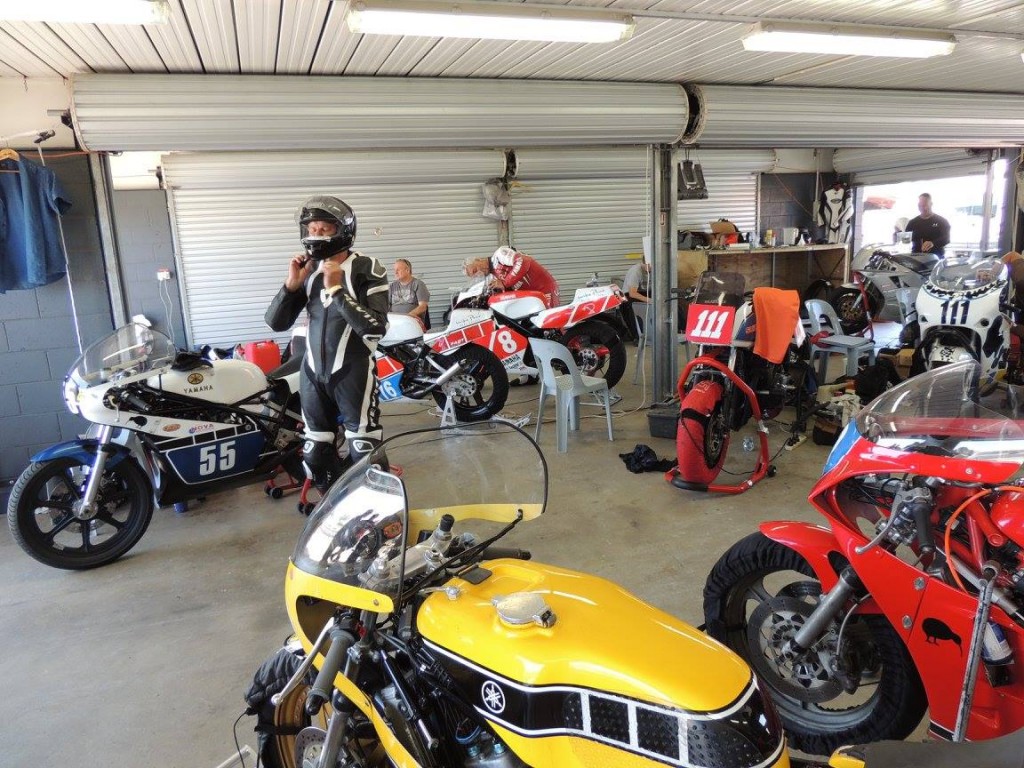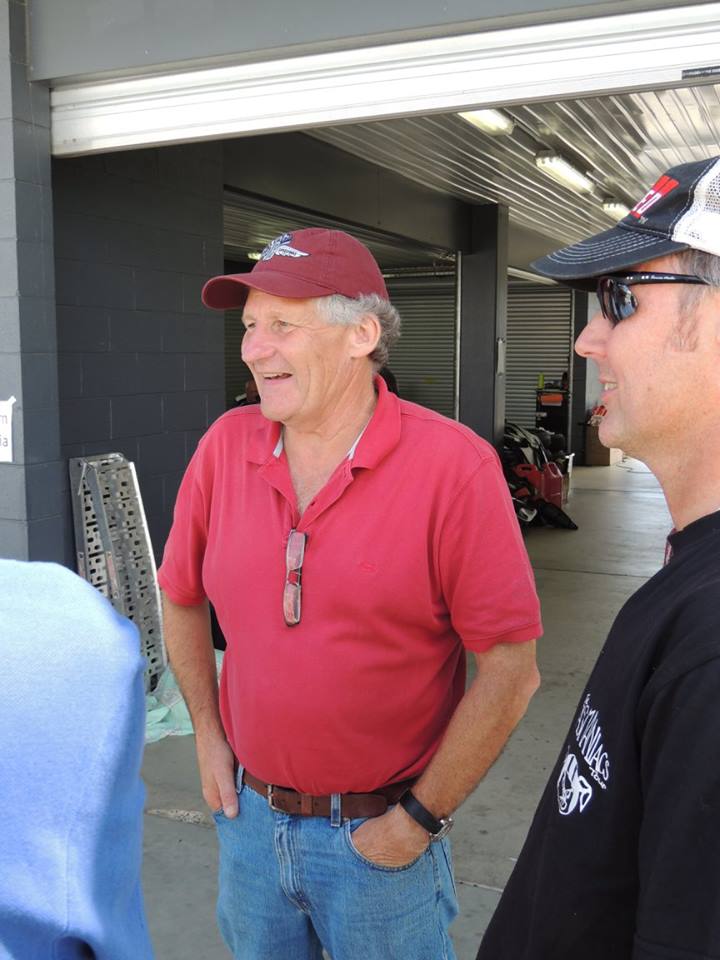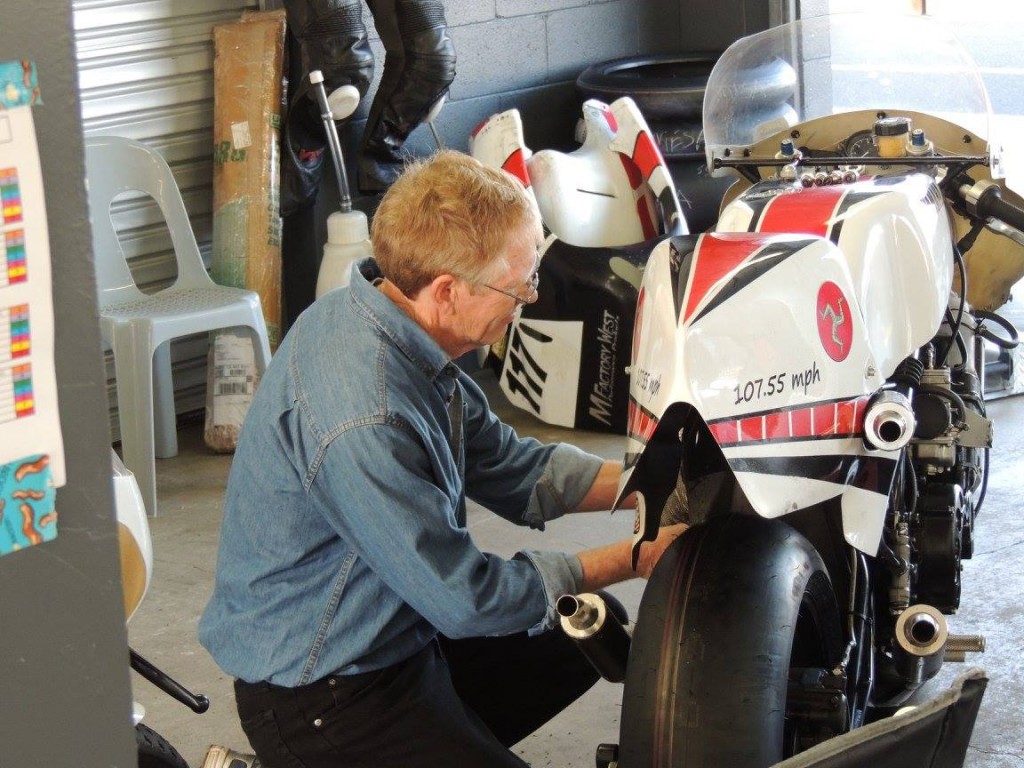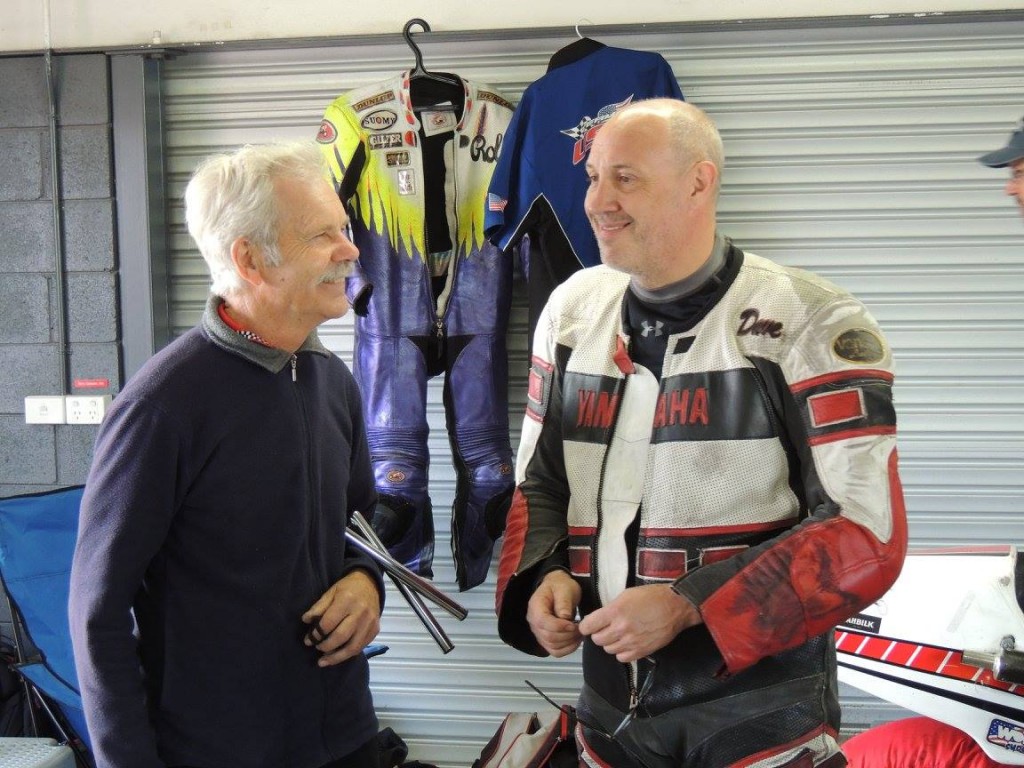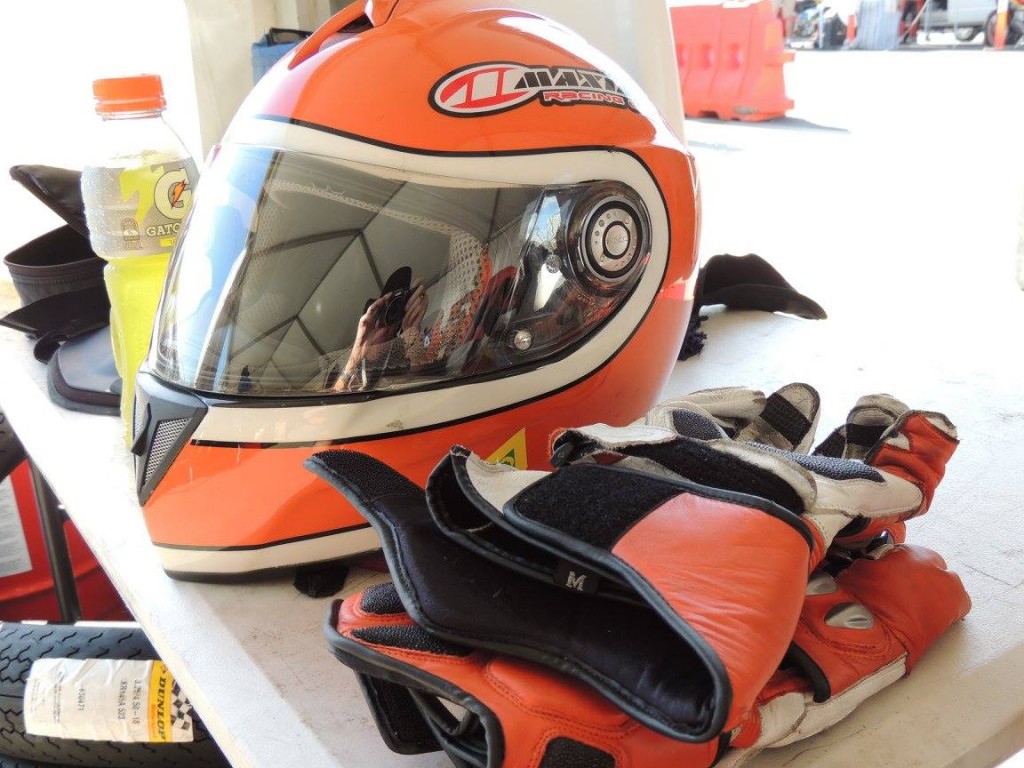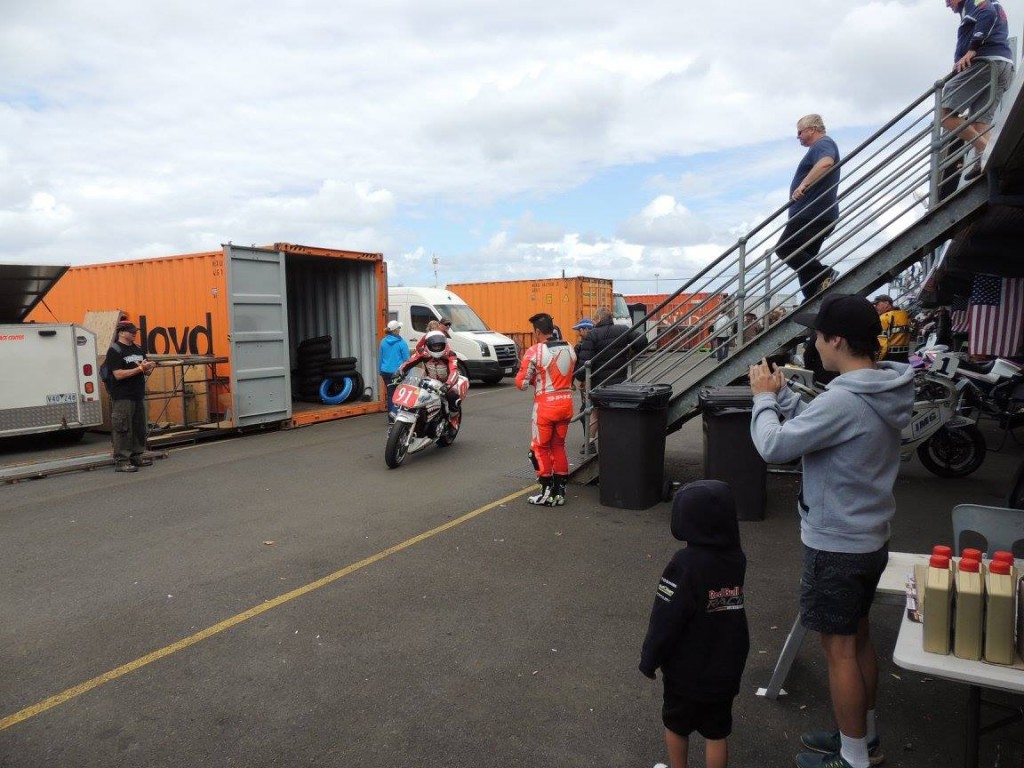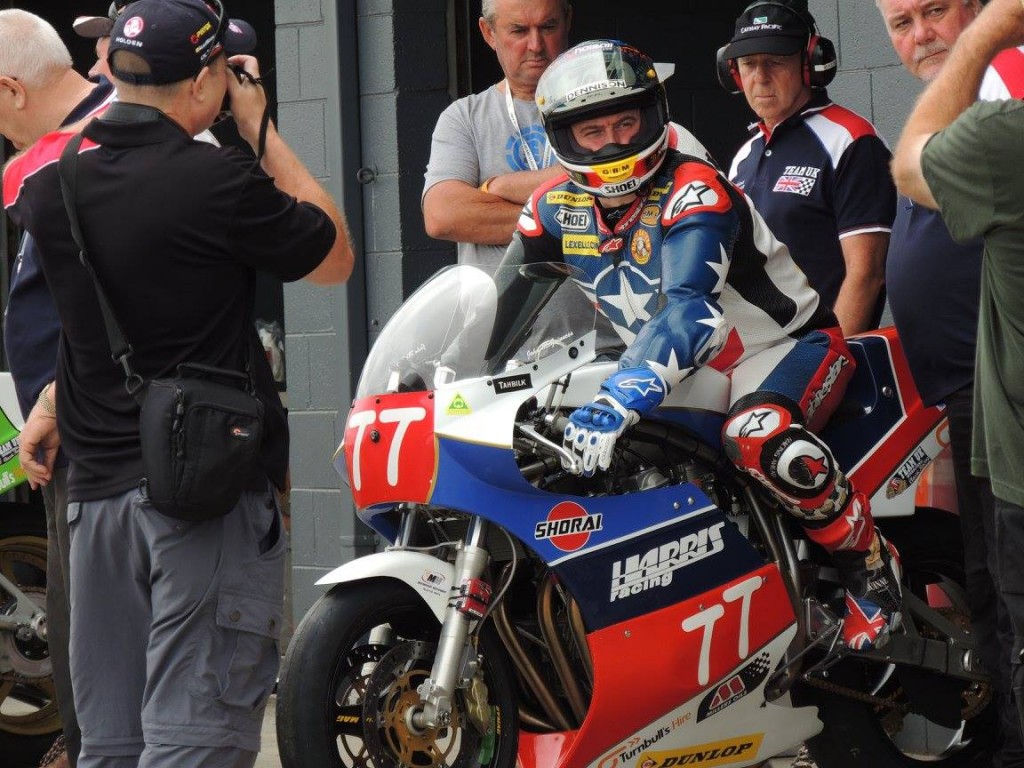Island Classic time again – Words and images by Phil Hall
The AMCN Island Classic race meeting (the 22nd running of this iconic event) was, as always, everything that any motorcycle racing enthusiast could want. Three furious days of racing (four, if you count the private practice day on the Thursday) full of colour, excitement, feel-good stories and heartbreaking bad luck.
Despite the constant nagging from the naysayers about Phillip Island weather, it was superb again. A cold wind off Bass Straight on Sunday was a bit annoying, but it didn’t rain and the conditions couldn’t have been better.
While the glamour events, the 4 rounds of the International Challenge held most interest for the bulk of the crowd (and it was big, again), the races in the Period classes was just as interesting and engaging.
After 10 years of trying, Team GB finally lifted the International Trophy through a combination of depth of talent, big-budget machinery and circumstances that seemed made-to-measure.
In 2014, Team GB arrived with two of their XR69 replicas powered by Yamaha FJ1200 engines. In the background there was much muttering about them being allowed to run an engine which, while still air-cooled, was pushing the limit of the regulations. Now some will say that surely this is the whole point of racing, to push the regulations as far as will be allowed, but, given that the engine ran in virtually unchanged form as a production engine until 1996, well beyond the age limit for P5, many believe that being able to use engine components that are more than 20 years newer than what everyone else is running in P5, confers considerably more than just a slight advantage to the team using them.
Lest this sound like sour grapes, it is fair to say that many of the other machines running in the IC were observing the letter, rather than the spirit, of the regulations as well. But a 2015 built bike where all the components except the engine are brand new, with 21st Century metallurgy and numerous “tweaks” that were not available in the period does seem to make a mockery of the regulations. And those entrants who choose to persevere with the aging Suzuki engine (albeit with updated componentry) struggle with increasing unreliability as engine cases and other parts fail due to the age of the components and the increasing amounts of horsepower being extracted.
That said, Roger Winfield, team owner of the big-budget British bikes, can go home happy that he has finally beaten the Aussies on their home turf. Given that there must be a raft-load of FJ engines still lying around here and that more than adequate information is already available to hot-rod them, it’s a sure bet that there will be many more of them slotted into frames before the IC in 2016.
It was a clean-sweep for Team GB, not only easily winning the teams’ pointscore, but also filling the top three podium positions in the individual points as well led by Ryan Farquhar. The Team GB roster was bristling with talent with names like Ryan Farquhar, Jeremy McWilliams, ex-pat Aussie, Glen Richards and newcomer Connor Cummins. They were able supported by the “lesser known” riders like Mike Edwards, Derek Browne and former PCRA President, Keith Higgs. You should expect such battle-hardened veterans to do well against an Australian team with part-time riders on medium budget bikes.
Lest it sound like I am damning the Brits with faint praise, every one of their stars is a great rider and ultra-nice people to boot so it’s good to see them get their reward.
From “our” side of the garage, the standout performer came right out of left field. Scott Owen from Melbourne, put all of his engineering expertise into building a “killer” Katana and put an “unknown” rider (in historic racing terms anyway) on it in the form of Jed Metcher. Metcher was outstanding, backing up his first touch of the bike in a private session at PI on the Tuesday with extraordinary pace in practice on Friday to put himself on grid spot #2 for the races. He backed this up with a 4th in Race1, a 2nd in Race 2 on the Saturday, a DNF in Race 3 and a win in Race 4.
The stats don’t really tell the full story, however. A victim of another rider’s engine blow-up, Metcher, along with Cameron Donald and Steve Martin, crashed heavily in the final qualifying session, sending the SORD squad into full rebuild mode. Then, in Race 3 on the Sunday, he was leading easily and pulling away when an oil leak in the bike appeared. Rather than cause the carnage of which he had been a victim the day before, Metcher pulled in and surrendered what would have been a certain victory. It was a mature and responsible decision that won him many admirers on the day.
In Race 4 he dominated, toying with the classy field before motoring off to win by 1.5 seconds. It was a hugely popular victory and helped dull the disappointment of knowing that the International Challenge was lost to Team GB. And it brought huge credit on a little privateer team who beat the best that was on offer on the weekend.
Metcher’s performance was one of the only highlights for Australia. The rest of the Aussie team had a weekend they would rather forget. Mechanical unreliability was the order of the day with a lack of consistency hurting both the team’s chances and the chances of the individual stars.TBR rider and former multiple Aussie superbike champion, Shaun Giles, was the best of the rest with two wins and a 2nd place in the four races, but his TBR team-mate had a shocker with engine blow-ups being the order of the day. Perennial favourite, Robbie Phillis, was hors de combat on Friday with a dud piston on his XR69 and was reduced to the role of a (very) grumpy spectator for the rest of the weekend. Robbie’s mood was considerably brightened, however, when his good mate and long-time supporter, Roger “Spud” Arnold, got onto the podium for the first time in one of the domestic races, riding Robbie’s old faithful Katana.
International star, Cam Donald was another victim of the oil spill in qualifying, forcing the Manta team into the most extensive rebuild of all three bikes that had been involved. On race day it looked like it had been trampled by a herd of elephants, a far cry from the usually immaculate bikes that emerge from that stable. Whether Cam was carrying an injury or whether the bike was hurt more than it first appeared is not known at this stage but Cam was certainly not his usual self, recording 2 4th’s a 3rd and a DNF in the four races, a poor result by his high standards.
TBR’s Brendan Roberts was odds on to take individual honours if not for a DNF while leading the finale race when his front sprocket retaining nut came adrift, nonetheless his 2nd, a 5th, and a 6th in the presceding bouts still saw him sneak into the top ten overall.
And so it went, as it often does. While even two shocking starts from McWilliams (struggling with clutch issues) seemed to give the Aussies some hope, the run of play went pretty much Team GB’s way from the kick-off and they went into Sunday’s two remaining races leading on points and only being required to stack the top 5 placings as much as possible in the two Sunday races to assure themselves of the win. Coming in to the last race, all that was required was for one Team GB rider to finish inside the top 5 and the trophy would be theirs. Farquhar duly did the deal and the champagne bottle, kept in the pits unopened for goodness-knows how many years, was popped and the team began what was a long and noisy celebration.
Grumbles about eligibility notwithstanding, it was a popular victory and all but ensures that Roger Winfield will continue to support the IC into the future.
The other “feel good” story on the international front was the performance of Team USA. The brief for them was to finish on the podium and beat Team NZ and this they duly did, despite being down on top bikes and star riders. Dave Crussell brought a trio of TZ750’s, staple of top rank historic racing in the USA as well as his old faithful P&M Kawasaki, ridden by Californian, Brian Filo. All four bikes performed flawlessly, the TZs, fettled by the affable and talented Scott Clough, never missed a beat, a precautionary change of clutch plates on one of them being the only maintenance required. Given the massive unreliability of these bikes (not just in the hands of the Americans, but Aussie teams as well) the result was stunning.
Second time IC visitor, Rob Mesa, riding one of the Crussell bikes, bombed his chance of being top American scorer with a jump start penalty in Race 3 and, in an unrelated incident, returned to the pits with a huge tyre burn on the tailpiece of the TZ courtesy of a dispute over track position. The American bikes that were expected to take it to the others were the Katanas of Joe Wier and Jimi Mac, but both bikes (including Jimi’s spare) were a basketload of trouble from Day 1 and it was left to the “old skool” TZ’s to fly the flag. Californian (and ex-pat Dutchman) Ed Haazer was outstanding, bringing his new Kawasaki MkII home in good position in all 4 races. The bike was a complete rebuild of Ed’s original race bike from many years ago which he had completely refurbished just for this event.
Team NZ continues to put their faith in small TZ’s and, without a big name rider on a “gun” bike, was always going to struggle. That said, the pits were mercifully free of bikes having open heart surgery all over the place as has been the case in previous years. On the NZ front, it was great to see Grant Dalton on his XR69, putting in some good rides. Dalton’s bike, built and fettled by Graeme Crosby, was fast and reliable and, with good coaching from “The Croz”, Grant had a good meeting.
The pits were awash with people, enjoying the atmosphere and seeing close-up what it takes to race at PI and the spectator stands were well-populated as well. Celebrities and famous riders were in attendance and it was wonderful to see Jeremy Burgess roaming the pits throughout the weekend, signing autographs, pausing for photographs and chatting at length will anybody and everybody. He was all smiles and commented to me just how much fun the meeting was. Don’t be surprised to see JB become more involved in the classic racing scene.
For me, the Island Classic is a “must”. There is no other meeting that brings together close racing, international competition, personalities of all kinds, accessibility for the spectators and a “feel good” atmosphere like it. If you haven’t been before, mark down Australia Day weekend, 2016, in your diary and get your backside trackside. I promise you, you won’t be disappointed.
